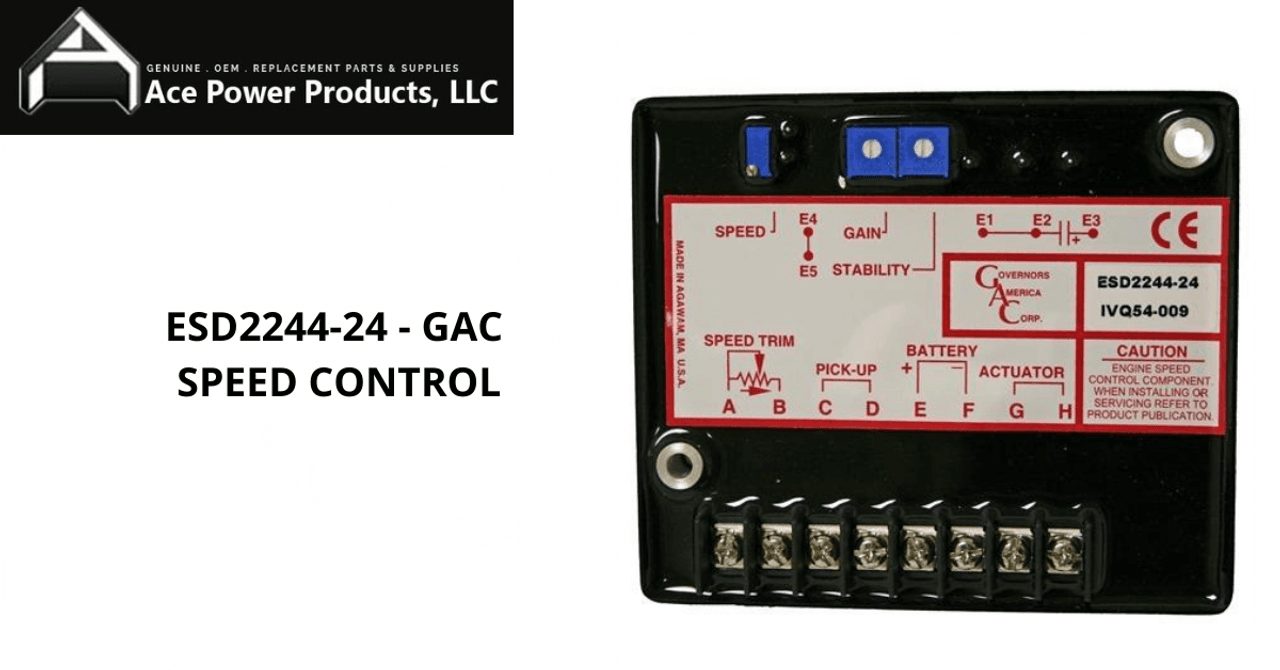Controlled speed devices are in household appliances, tools found in your garage and garden, and scale up to large industrial machinery. Only a rudimentary tool does not have a speed controller. Today, our United States of sophisticated equipment is designed with safety and precision in mind. Ace Power Products believes your electric motor device should not operate without a speed controller. Or, if your machine does not have the responsive touch it used to, you might be ready for a replacement from our selection.
Why Your Electric Motor Has a Speed Controller
An ESC, or Electronic Speed Controller, regulates the power inside the motor of your electric device. From 0 - 100, this mechanism gives you the ability to control the throttle. The purpose of a Woodward speed controller is to provide you with control over the power flow to your device. This is important if the device is handheld or part of a system such as an assembly line. When drilling, the proper rotation speed is dependent on the materials being used. Throughput rates need to vary if you are installing a pump. A Woodward speed controller also makes the device safer for the user and is vital to ensure the outcome of the work being done.
There are three main components to an Electronic Speed Controller. These are a processor, the field-effect transistor, and the Battery Eliminator Circuit/voltage regulator. We will not get too into the weeds on this, but a momentary dip into some more technical thinking will explain these devices' additional reasons. The Bec/voltage regulator acts as the gatekeeper for the power toward the end of the battery life. If the machine reaches its minimum voltage, the BEC holds the rest of the energy to critical power controls such as emergency stops or reversals.
Other Elements of a Woodward Speed Controller
As we mentioned above, the ESC is three different parts working together. The field-effect transistor, or FET, is doing all the work behind the scenes. It interprets the voltage and currents on behalf of the battery and the motor. The processor is an integrated circuit that is built on just a semiconductor chip made of silicone. This tiny chip tells the transistor what signals it is getting from the receiver in the machine. It acts as the translator that says, "He is pushing the lever for 68%!" so the FET can adjust the power to the motor accordingly.
Different Kinds of Speed Controllers
The two different Woodward speed controllers are the brushed motor and the brushless motor.
The brushed motor is a direct current device. Simply explained, it "chops up" the electricity as it flows to the motor. The brushes operate mechanically to communicate.
A brushless motor is a most sophisticated, three-phase, alternating current part. They have three "banks" of energy. You will always find that the brushless motor is wound in multiples of three. The brushless ESC powers the motor by switching phases, cursing the electromagnetic field to alternate.
Contact Us
Now that you've been primed on some of the more delicate parts of an electric motor, perhaps you will want to talk to us at Ace Power Products about industrial engine parts from our select, high-quality brands, available across the United States. Call us at (844) GEN-PART or message us here if your equipment is not working correctly. Your speed controller is an important piece to keep you safe and ensure quality work.

